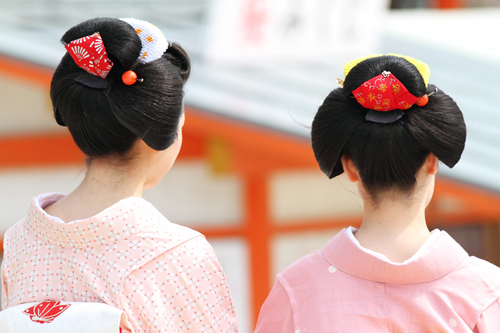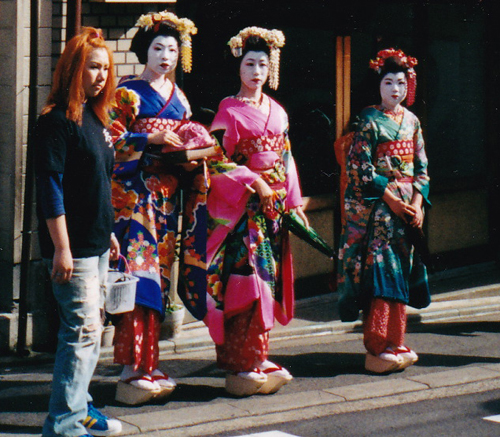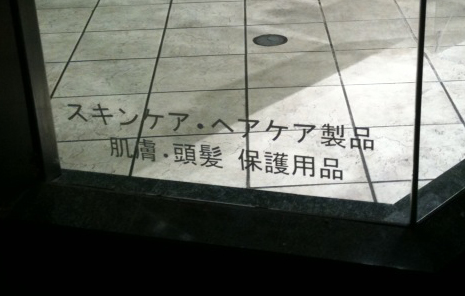190. The "Long Hair" Radical: 髟
When you hear "long hair" and "radical," you may picture unwashed hippies spread out across the Woodstock lawn or long-haired students protesting the Vietnam War. But of course that's not what we're talking about with the "long hair" radical!

Photo Credit: Teruhide Tomori
Japanese Names of the "Long Hair" Radical
Here's one Japanese name for the radical in question:
髟 (かみ: the "long hair" radical)
When this radical appears at the top of a kanji (which is always the case for both Joyo and non-Joyo characters), we can use these more specific names:
髪頭 (かみがしら: the "long hair" radical on top)
hair on the head + radical on top of a kanji
髪冠 (かみかんむり: the "long hair" radical on top)
hair on the head + radical on top of a kanji
A few notes about this:
• No one would use only 髟 for the radical name because it sounds identical to 髪 (かみ: hair on the head). In fact, that's where 髟 gets its yomi; as an autonomous non-Joyo character, 髟 just has the yomi of ヒョウ.
• Some sources (including Japanese Wikipedia) present かみがしら as the sole radical name.
• Although 頭 can mean "head" and even "hair on the head," it means "radical on top of a kanji" in 髟頭.
• As these two longer radical names show, the position name for a radical atop a kanji can be either -頭 or -冠.
Etymology of 髟
The newer edition of Henshall says that in 髟, the 镸 represents “long hair; person with long hair,” and the 彡 conveys “complete, full/abundant.” Thus, 髟 means “hair is full/abundant.”
By the way, the situation is a bit different in Chinese; 髟 simply means "hair."
Here's how 髟 used to look:

© Richard Sears
Seal-script version.
The "Short Hair" Radical
The term "'long hair' radical" may seem cumbersome, but "long" differentiates 髟 from this radical:
radical 59: the "short hair" radical, 彡, as in 形 (104: shape)

Photo Credit: Eve Kushner
Just One Joyo Kanji
Speaking of short things, this Radical Note will be uncharacteristically short because 髟 appears in only one Joyo kanji:
髪 (1706: hair on the head)
I mentioned this kanji in the first bulleted note above. You probably know 髪 best by its kun-yomi, かみ.
If you're eager to see more of 髟, essay 1706 on 髪 includes non-Joyo characters with this radical, such as 髷 (topknot) and 鬢 (sideburns). In fact, the latter kanji appears in this whopper of a compound:
鬢髪 (びんぱつ: hair on the temples; hair on the sides of the head)
It takes 38 strokes to write "hair on the temples"! Our "long hair" radical requires 10 strokes, so that accounts for 20 of the 38 strokes!

Photo Credit: Eve Kushner
In Vancouver, Canada, a store sells skin and hair products, as the top line indicates:
スキンケア•ヘアケア製品 (skin care and hair care products), where 製品 (せいひん) means "products"
The lower line provides more detail:
肌膚 (きふ: skin)
頭髪 (とうはつ: hair on the head)
保護用品 (ほごようひん: personal care products)
Did you notice that 頭髪 is the inverse of the radical name 髪頭 (かみがしら)?!
